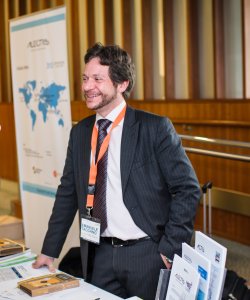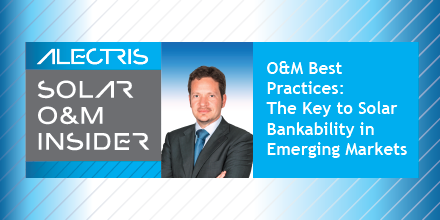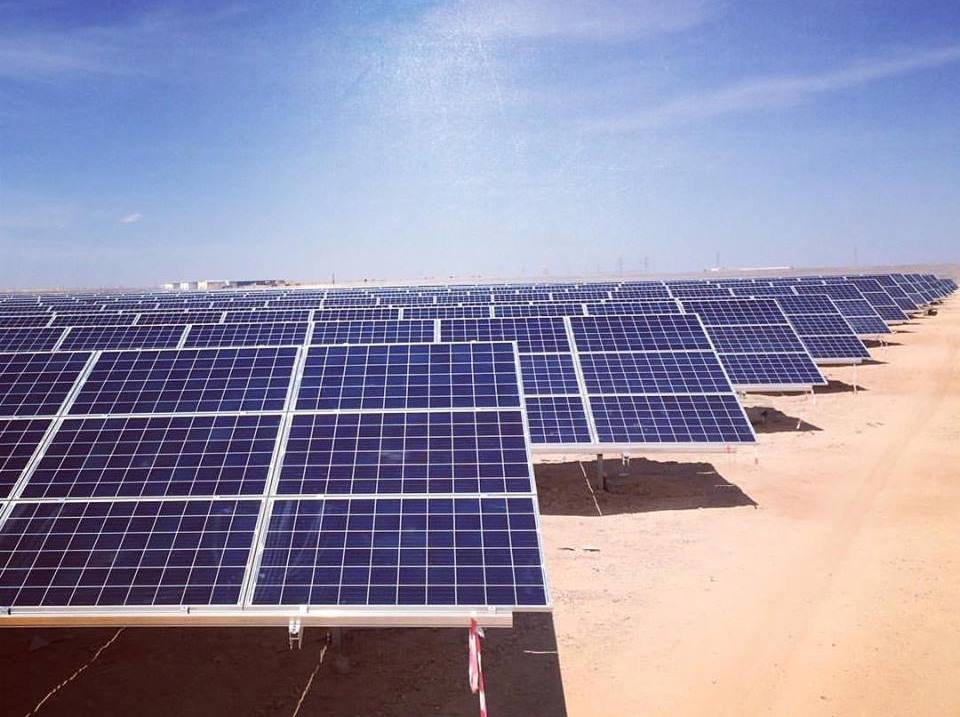Welcome to the Solar O&M Insider, the podcast series dedicated to solar operations, maintenance and asset management. This series is brought to you by Alectris, a global solar asset care innovation firm. I’m Glenna Wiseman of Identity3 your host.
Our topic today is O&M Best Practices: The Key to Solar Bankability in Emerging Markets including a review of SolarPlaza’s recent Making Solar Bankable event. We are talking to Emanuele Tacchino, Business Development Manager for Alectris in the Western Europe and Middle East regions.
In this podcast, Emanuele offers an overview of the conference with a focus on:
- How SolarPlaza’s Making Solar Bankable event stands out from other industry events
- The importance of emerging solar markets
- Sectors of the investment and solar industries represented in the audience
- Takeaways from a round table organizer
- The role of solar operations, maintenance, and management in emerging solar markets worldwide
We want to thank Alectris for providing this valuable overview of SolarPlaza’s Making Solar Bankable event.
Glenna: Welcome to the Solar O&M Insider, the podcast series dedicated to solar operations, maintenance and asset management. This series is brought to you by Alectris, a global solar asset care innovation firm. I’m Glenna Wiseman of Identity3 your host.
Our focus today is on the role of Solar O&M in making solar bankable. Today’s guest is Emanuele Tacchino, Business Development Manager for Alectris in the Western Europe and Middle East regions. Welcome to the show, Emanuele.
Emanuele: Thanks, Glenna. Thank you very much for the introduction.
Glenna: Okay. So we’re going to start by asking you to give us a bit of background on your solar industry experience.
Journey to Solar Operations & Maintenance (O&M)
Emanuele: Okay, let’s start from the beginning for a quick introduction of my solar experience. I am a
Telecommunications Engineer. After several experiences as a consultant in primary firms like Deloitte and Accenture, I began working with PV in 2005. So I would say, from the very beginning of the sector. I have always been active in business development. My first experience was with group of investors that planned to start manufacturing PV cells and model line in Italy. That, by the way, is actually still in existence and producing quite good PV models.
After that, in 2007, I worked with an Italian import fund named Solar Ventures. In Solar Ventures I had a complete experience, a 360 degree experience in PV dealing with origination, development, construction and management of PV plants, PV projects, and after-plants. I was in charge of project development, and we successfully directly originated, permitted, and sold to primary funds for IPP more than 120 megawatts. We also built our own portfolio of roughly 40 megawatts of reconnected plants. Then in 2013, I joined Alectris as Business Development Manager. Alectris is an international player that is active in O&M and asset management. In addition, Alectris is very skilled in engineering, revamping, and finding new solutions for the improvement of plant performances. We are currently active in very different markets around the world. In Europe we have a presence in Italy, Greece and Spain. In Asia, we are present in India and Japan. In the Middle East, we have a presence in Jordan. Finally, we have a presence in the US.
Glenna: Excellent. So in all of that experience you’ve been to quite a few solar industry events, I would imagine.
Emanuele: Yes. A lot. I’ve been to a lot of events.
Glenna: And Alectris was recently involved in the very successful Solar Plaza, Making Solar Bankable event. How was this event different in your perspective than the ones that you had been to before?
 How SolarPlaza’s Making Solar Bankable Event Stands Out from Other Industry Events
How SolarPlaza’s Making Solar Bankable Event Stands Out from Other Industry Events
Emanuele: It was quite different. I’ve been to a lot of events in the last two or three years — let’s say all of the most important PV events in Europe. But this last Solar Plaza event has been definitely one of the best, if not the best at all. And it was completely different from the standard, typical O&M events that I attended before. Here, the focus was on pointing out the best practices of development, financing, PPA structuring, construction, and operation to make a PV plant really bankable everywhere in the world. As a result, the level, the number, and the background of the participants was extremely different and wider compared to other events I have attended in the past.
It’s now absolutely clear to all of the stakeholders in the solar industry that the solar business has become really a global business. Every country, even the most exotic one, needs a clean source of renewable electricity. And this is particularly exciting for me and for all of those that started in this sector from the very beginning. This event, and the result of solar everyday, shows that as always the revolutions are overestimated in the short term but underestimated in the long term. Thinking about how young the solar sector is, and considering the huge result that solar has achieved so far, I think it is really exciting to think about what could happen in the long term. And this event proved that there is a very high interest in really making solar bankable everywhere in the world.
Glenna: So this event was particularly focused on emerging solar markets.
Emanuele: Correct.
Glenna. Correct. So why was the event important for Alectris?
Importance of Emerging Solar Markets
Emanuele: Let’s start from an introduction to explain the huge importance of this event for us, for all the participants of the event, and for all the investors and lenders in PV. It is now absolutely clear that to really make a solar project bankable, it is not sufficient, it is not enough having a clean, ready to be built project or a bankable country with financing and a bankable EPC. It is clear that great attention has to be devoted, from the very beginning of the setup of the team on a unique really long term partner that is the O&M provider. This long term partner is really the last long term partner for investors and lenders.
A project can be really considered bankable only if you can rely on professional players who can take care of your PV investment for the long term with the highest quality, responsiveness, and reliability while providing you the with the same level of contractual standards and guarantees that are used in most financial markets. A PV plant must properly operate for decades while construction will last only some months. Having said that, in the so-called emerging markets it is very difficult to find such expert players locally.
Typically, there is absolutely zero or close to zero experience in PV for local operators. And also the EPC business is a very different business. It is a product business while the O&M business is a service business. Typically, EPC players prefer to build a plant and to move on to another country or to another plant to be built. They don’t like so much to be involved in operation and maintenance because it is not their business. They provide O&M services quite often only because they are forced to do so by the lenders or by the investors to give bankability in some way to the project. So it was very important for Alectris to attend this event because we wanted to point out to all the participants: the investors, the lenders, and also EPC, that we can be this ideal long term partner for them in their project development around the world.
We presented and discussed with them a very nice business case we have successfully executed in Jordan on a 12 megawatt project in the Ma’an Development Area, where we helped a local partner and his project to be bankable and to receive a very demanding project financing with one of the major financial institutions, IFC. We provided O&M services immediately after reconnection together with the third party tier 1 EPC, that was involved, that provided construction. With this EPC we managed to make a perfect bankable split of EPC and O&M contracts. We divided the relevant responsibilities and guarantees with one part provided by us the other side provided by the third party EPC. This structure allowed us to be involved immediately after the reconnection in the O&M services, and allowed the EPC to be disengaged activities like O&M, which are outside of their main focus. This business case included also a nice O&M transfer of knowledge from our side to the local partner. And we are basically ready, thanks to this case, to replicate this successful bankable model practically everywhere.
I think that in any event Alectris has gained a very good universal visibility. I’m quite sure that we can continue a lot of the discussion we started at the event to scale our customer needs in line with our project development. We hope to be involved as their O&M provider when they’re really ready to start with their project. I have also perceived a lot of interest with the fact of this approach from some EPCs that attended the event. I believe that this form of having an EPC committed to construction and a different O&M provider committed to O&M from day one is a real win-win model for every party involved in a project.
Glenna: So you’ve mentioned a lot of different entities or stakeholders that are involved in a solar project in an emerging market already. It sounds to me like the audience at this event, from what I could see about it, was pretty diverse. You had investment all the way through to O&M providers. Is that correct?
Sectors of the Investment and Solar Industries Represented in the Audience
Emanuele: That is correct. The event was well attended with a huge participation of financial institutions, tier one financial institutions, financial investors, and tier one developers, all of them active worldwide. It was very interesting because this is a period of global low interest rates, high liquidity on markets, carry trade practice, low profitability for financial institutions, and instability of stock exchange and financial markets. All of these players and lenders are of course searching for better and more stable returns.
With this perspective, this event fits very well with their search. Because a small investment, bought with an existing reconnected plant in a mature market, or a ready-to-be-built market, or an emerging market perfectly represent an answer to this research of stable, good and durable IRR. So I have to compliment the SolarPlaza guys and FMO, the Dutch development bank that organized this event, because they presented and discussed avant-garde topics that are perfectly aligned with this perspective.
Glenna: And you presented and you participated as a round table organizer related to the role of O&M in emerging markets. Can you tell us — and I’m fascinated to find out — what were some of the questions from the audience, and what was some of the feedback that you were able to provide?
Takeaways from a Round Table Organizer
Emanuele: First of all, I really liked the round table session because it was something quite new in this market. It was the first time I attended a round table, and I perceived a genuine interest in the audience according to various and very different topics. There were tables from PPA to financing to our table of securing professional O&M services in emerging markets. So the participants at my table were interested in our Jordan business case. I explained to them the key terms of this business case. And they have raised appropriate questions, I have to say, about some topics of this structure. Just to mention some examples, we discussed the level of guarantees with grants from the beginning of the operation of this 12 megawatt project. What are the guarantees provided by the EPC and the split of responsibilities and guarantees and the overlapping of our activities with the EPC activities in this framework?
Again, being that the plant is in a desert area, they were also specifically interested in the maximum intervention time we can provide to solve a specific fault. In issues with respect to model cleaning in case of sandstorms and so on, they were particularly interested in the art of our operation and maintenance activities, our monitoring system, and our solar ERP system as well. It was clear. There was a long discussion about how crucial it is for proper operation and maintenance to have a top-level monitoring and alerting system on top of the activities as a base to provide very good and reliable services.
Again, another point of interest was the O&M knowledge transfer to our local partner. We trained the local partner for field activities, including on-site training. They also raised some points to better understand how this model can be replicated in some specific project development that they have under development in far but still deserted countries. I remember a participant at my table had a project in Mongolia, and we discussed how we could successfully replicate the same model there.
Glenna: You just don’t want to go there in the winter.
Emanuele: Yeah, exactly.
Glenna: Was there a consensus that came out of this event that the O&M and asset management partner needs to be involved in the very beginning like you did with the Arabia One Solar? That’s the project in Jordan.
Emanuele: Yes, exactly.
Glenna: Did that seem to be a consensus in the event, that we really need to get the entity involved in
the very beginning who’s going to take care of the project for the 20 years or 25 years it’s going to be operating?
Emanuele: Yeah, this is absolutely a need. As mentioned before, no one now thinks about O&M as something that must be considered after. It’s a second priority with respect to financing PPAs or EPCs. The key to be successful in this emerging market is clearly to find — and it is challenging in these emerging markets — is to find and rely on professional solar experts. As I said, it doesn’t exist at all in some emerging markets or if it exists, they are not able to provide guarantees or agree the standardized contractual structure that typically the major international investors or banks requires. So it’s not only a matter of capability, but it is also a matter of learning.
Glenna: So the international finance, the IFC, how much do you think their impact has as a leading investor in some of these markets? Are they helping to shape some of these O&M requirements, or are the O&M requirements helping to shape the way they look at these projects?
Emanuele: Basically, they were the major driver of our involvement in Jordan. So we have been involved in this project from the beginning because IFC was requiring an O&M bankable provider to be involved from the very beginning for the security of its investment. To have a reliable counterpart to rely on for the standardized guarantees, the standardized contracts that are typically needed for project financing is very demanding. So that’s why this model, this business case, can really be replicated all around the world; because the requirements of IFC are practically similar, if not identical, to the requirements of other financial institutions.
Glenna: Excellent. All right. So any other insights into the role solar operations, maintenance and asset management play in the emerging market?
The Role of Solar Operations, Maintenance, and Management in Emerging Markets
Emanuele: Yes. In emerging markets, the key of solar development is what we have said. A reliable professional expert standardizes the contracts or contractual structure. From my point of view, investors, lenders, or developers should rely on players who are sufficiently agile. I mean, the counterpart must be able to move quickly and to follow the investors and the lenders in various countries in various situations, and they need to have a proven experience of managing plants in mature and in emerging markets. And they must show the total commitment to the results that are now mandatory in the most mature markets. As in Italy or in Spain or in Greece, the PV plant must be squeezed every day up to the maximum. This is true all around the world. At Alectris, we usually say that the goal is to turn what is currently perceived as an operating cost, an O&M cost, into an additional source of profit for the investor. So having the right commitment and mindset is really the key not only for emerging markets, but in general for every sort of market all around the world.
Glenna: Excellent. All right. We really appreciate you joining us today, Emanuele Tacchino from Alectris from your office in Milan. We can direct our listeners to Alectris.com for more information. I’m Glenna Wiseman with Identity3, and we thank you for joining us today.
Emanuele: Thank you so much, Glenna.
The Solar O&M Insider podcast series is brought to you by Alectris at Alectris.com.


